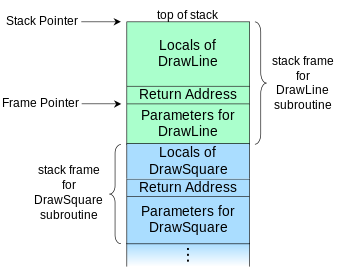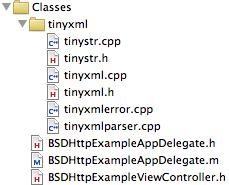[原]iOS安全攻防(十七):Fishhook
- 什麼是fishhook
- 什麼是Mach-O
- fishhook的原理
- fishhook替換Core Foundation函數的例子
Fishhook
眾所周知,Objective-C的首選hook方案為Method Swizzle,於是大家紛紛表示核心內容應該用C寫。
接下來進階說說iOS下C函數的hook方案,先介紹第一種方案————fishhook .
什麼是fishhook
fishhook是facebook提供的一個動態修改鏈接Mach-O符號表的開源工具。
什麼是Mach-O
Mach-O為Mach Object文件格式的縮寫,也是用於iOS可執行文件,目標代碼,動態庫,內核轉儲的文件格式。
Mach-O有自己的dylib規范。
fishhook的原理
詳見官方的How it works,這裡我作個簡要說明。
dyld鏈接2種符號,lazy和non-lazy,fishhook可以重新鏈接/替換本地符號。
如圖所示,__DATA區有兩個section和動態符號鏈接相關:__nl_symbol_ptr 、__la_symbol_ptr。__nl_symbol_ptr為一個指針數組,直接對應non-lazy綁定數據。__la_symbol_ptr也是一個指針數組,通過dyld_stub_binder輔助鏈接。<mach-o/loader.h>的section頭提供符號表的偏移量。
圖示中,1061是間接符號表的偏移量,*(偏移量+間接符號地址)=16343,即符號表偏移量。符號表中每一個結構都是一個nlist結構體,其中包含字符表偏移量。通過字符表偏移量最終確定函數指針。
fishhook就是對間接符號表的偏移量動的手腳,提供一個假的nlist結構體,從而達到hook的目的。
fishhook替換符號函數:
int rebind_symbols(struct rebinding rebindings[], size_t rebindings_nel) {
int retval = prepend_rebindings(rebindings, rebindings_nel);
if (retval < 0) {
return retval;
}
// If this was the first call, register callback for image additions (which is also invoked for
// existing images, otherwise, just run on existing images
if (!rebindings_head->next) {
_dyld_register_func_for_add_image(rebind_symbols_for_image);
} else {
uint32_t c = _dyld_image_count();
for (uint32_t i = 0; i < c; i++) {
rebind_symbols_for_image(_dyld_get_image_header(i), _dyld_get_image_vmaddr_slide(i));
}
}
return retval;
}
關鍵函數是 _dyld_register_func_for_add_image,這個函數是用來注冊回調,當dyld鏈接符號時,調用此回調函數。 rebind_symbols_for_image 做了具體的替換和填充。
fishhook替換Core Foundation函數的例子
以下是官方提供的替換Core Foundation中open和close函數的實例代碼
#import <dlfcn.h>
#import <UIKit/UIKit.h>
#import "AppDelegate.h"
#import "fishhook.h"
static int (*orig_close)(int);
static int (*orig_open)(const char *, int, ...);
void save_original_symbols() {
orig_close = dlsym(RTLD_DEFAULT, "close");
orig_open = dlsym(RTLD_DEFAULT, "open");
}
int my_close(int fd) {
printf("Calling real close(%d)n", fd);
return orig_close(fd);
}
int my_open(const char *path, int oflag, ...) {
va_list ap = {0};
mode_t mode = 0;
if ((oflag & O_CREAT) != 0) {
// mode only applies to O_CREAT
va_start(ap, oflag);
mode = va_arg(ap, int);
va_end(ap);
printf("Calling real open('%s', %d, %d)n", path, oflag, mode);
return orig_open(path, oflag, mode);
} else {
printf("Calling real open('%s', %d)n", path, oflag);
return orig_open(path, oflag, mode);
}
}
int main(int argc, char * argv[])
{
@autoreleasepool {
save_original_symbols();
//fishhook用法
rebind_symbols((struct rebinding[2]){{"close", my_close}, {"open", my_open}}, 2);
// Open our own binary and print out first 4 bytes (which is the same
// for all Mach-O binaries on a given architecture)
int fd = open(argv[0], O_RDONLY);
uint32_t magic_number = 0;
read(fd, &magic_number, 4);
printf("Mach-O Magic Number: %x n", magic_number);
close(fd);
return UIApplicationMain(argc, argv, nil, NSStringFromClass([AppDelegate class]));
}
}
注釋//fishhook用法 處
rebind_symbols((struct rebinding[2]){{"close", my_close}, {"open", my_open}}, 2);
傳入rebind_symbols的第一個參數是一個結構體數組,大括號中為對應數組內容。
不得不說,facebook忒NB。
作者:yiyaaixuexi 發表於2014-2-12 0:08:03 原文鏈接 閱讀:8970 評論:19 查看評論- iPhone/iPad開辟經由過程LocalNotification完成iOS准時當地推送功效
- CI Weekly #7 | Instgram/Quora 等大公司怎樣做繼續部署?
- [iOS]零碎UITabBarController步驟及自定義
- iOS 功能優化:Instruments 工具的救命三招
- [iOS 轉]iOS中 最新搜集的代碼塊
- 嵌入式&iOS:回調函數(C)與block(OC)傳 參/函數 比照
- 嵌入式&iOS:回調函數(C)與block(OC)回調比照
- [iOS 項目視頻] iOS視頻大全
- ios證書配置管理;iOS消費證書、測試證書請求及管理;ios推送證書請求及配置;Xcode打包證書配置;多人開發證書共享辦法
- [iOS]APP打包上傳後在構建版本中不顯示
- TYPESDK手游聚合SDK客戶端設計思緒與架構之三:iOS平台一致化接口構造及思緒
- [iOS]modalPresentationStyle和modalTransitionStyle
- [iOS 項目框架構建篇] iOS MVVM+RAC 從框架到實戰
- [iOS]_[系統]_[幾種獲取聯系人通訊錄的方法]
- 不想升級蘋果iOS8怎麼辦?防止iphone/ipad自動下載安裝包方案![圖]




